
Robots can also do the work of baristas!
For example, let it stir the milk foam and coffee evenly. The effect is like this:

Then make it more difficult, make a latte, and then stir it It is easy to make a pattern with a stick:
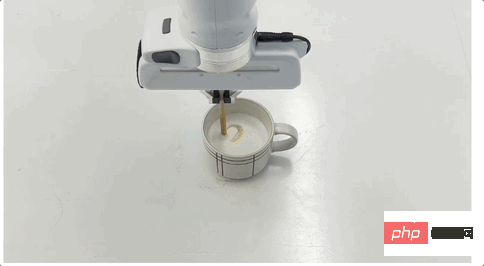
These are based on a study that has been accepted as Spotlight by ICLR 2023. They launched the proposed fluid Control the new benchmark FluidLab and the multi-material differentiable physics engine FluidEngine.
The research team members come from CMU, Dartmouth College, Columbia University, MIT, MIT-IBM Watson AI Lab, and the University of Massachusetts Amherst.

With the support of FluidLab, it will be easy for robots to handle fluid work in more complex scenarios in the future.
What are the "hidden skills" of FluidLab? Let’s have fun together~
FluidLab relies on FluidEngine as the engine support. As the name says, the main simulation object is fluid, different materials, and various types. It can fully grasp the details of sports.
Let’s try simulating various scenes of making coffee. The movement trajectories of coffee and milk foam are also very realistic.

Of course, simulating ice cream is also a matter of sprinkling water.
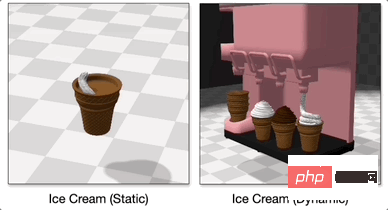
Or simulate the movement trajectory of water flow under different conditions.

If you still can’t see the strength of FluidLab, then go straight to the difficulty level.
For example, let’s start with a comparison simulation and let the platform simulate the collision of different materials with the container when they fall. From left to right they are: hard materials, elastic materials and plastics.

Or the trajectories of different non-viscous liquids and viscous liquids when they fall.
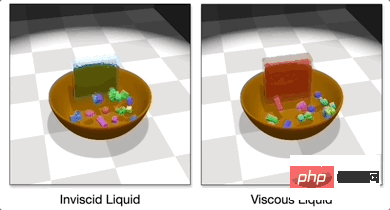
#More difficult and simulate the state when gas and liquid meet.
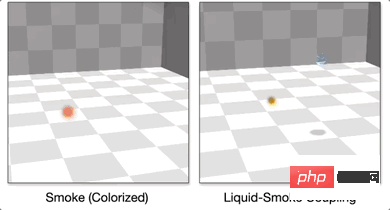
Easily done!
At this time, some friends may wonder: Does the simulation in so many states conform to physics or fluid mechanics?
You can rest assured that the research team directly disclosed the verification video. When it comes to some specific physical phenomena, FluidEngine can accurately simulate it.
Common physical phenomena such as Karman vortex and dam failure can be accurately simulated.

Buoyancy, incompressibility and volume stability of liquids can also be easily reflected in the simulation.
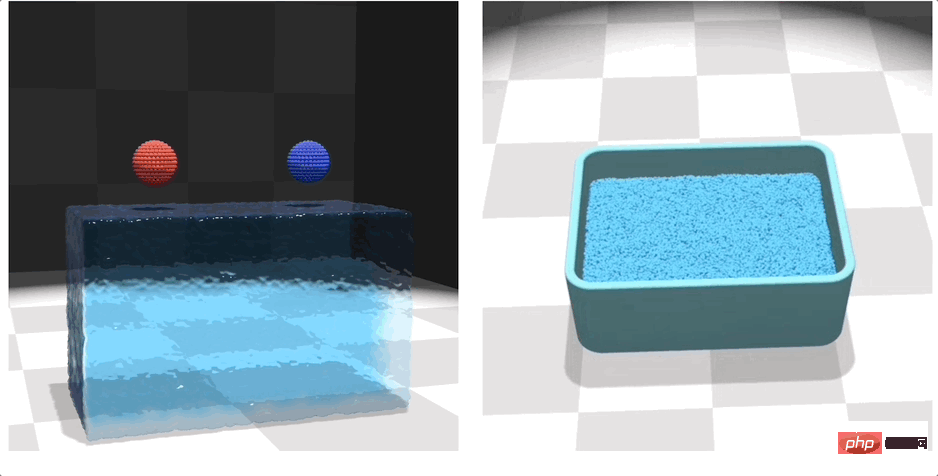
Come to the advanced level, use the Magnus effect to verify: translation, slow counterclockwise rotation of translation, fast counterclockwise rotation of translation, and fast clockwise rotation of translation. All accurate.

Add 100 million points more difficulty and try conservation of momentum and Rayleigh-Taylor instability.
......
How did the research team achieve such a simulation that is so close to the real world?
First of all, in terms of programming language, FluidEngine chose Python and Taichi. Taichi is a recently proposed domain-specific programming language for GPU accelerated simulation.
This provides a user-friendly set of APIs for building simulation environments. At a higher level, it also follows the standard OpenAI Gym API and is compatible with standard reinforcement learning and optimization algorithms. .
The reason why it is possible to achieve realistic virtual simulation effects can perhaps be gleaned from the process of creating an environment with FluidEngine.
The environment it creates consists of five parts:
where, During the simulation process, different calculation methods are used for materials in different states.
For solid and liquid materials, the simulation process uses the moving least squares material point method (MLS-MPM), which is a hybrid Lagrangian-Eulerian method that uses particles and meshes to simulate continuous body material.
For gases such as smoke or air, the advection-projection scheme is used in the simulation process to simulate them as incompressible fluids on a Cartesian grid.
In this way, realistic effects can be simulated for specific situations.
The paper, project address and code link are attached at the end of the article. Interested friends can click to view.
Project homepage: https://fluidlab2023.github.io/Paper link: https://arxiv.org/abs/2303.02346 Code link: https://github.com/zhouxian/FluidLab
The above is the detailed content of For robots to learn coffee latte art, we have to start with fluid mechanics! CMU&MIT launches fluid simulation platform. For more information, please follow other related articles on the PHP Chinese website!




